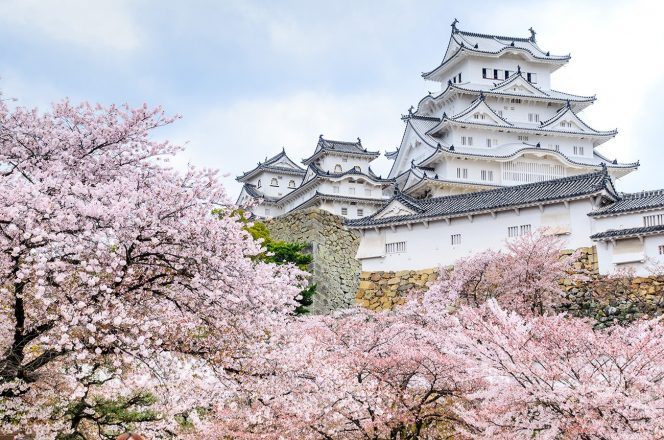National identities are complex and multi-faceted, woven together by a rich tapestry of history, culture, and tradition. Across the globe, nations proudly showcase their unique attributes through iconic symbols representing them and embody their people’s spirit and essence. A nation’s heart and soul can be seen through its characters, ranging from the towering Eiffel Tower that graces the skyline of France to the colorful truck art that adorns homes in Pakistan to the peaceful yoga practices synonymous with India.
Christ the Redeemer, a statue that dominates Rio de Janeiro, is a powerful representation of faith and cultural variety in Brazil. An estimated 8.1% of Brazil’s GDP comes from tourists drawn to the country by the statue.

The Eiffel Tower, a classic representation of France, tower over the City of Lights. Completed in 1889 to serve as the World’s Fair entrance arch, it has endured as a symbol of French elegance and technical mastery. The tower significantly contributes to France’s tourism sector, with millions of tourists annually visiting. According to data from the French Ministry for Europe and Foreign Affairs, the Eiffel Tower alone brings in almost 7 billion euros in economic benefits annually, demonstrating the tower’s significant economic influence on the country.

Truck Art is a distinct and dynamic picture of national identity on Pakistan’s colorful streets. Truck Art is a visual feast of elaborate designs, bright hues, and intricate patterns that adorn trucks, rickshaws, and buildings. It not only serves as a form of artistic expression, but it also reflects the Pakistani people’s determination and ingenuity. Truck Art has become a global phenomenon, according to a report by UNESCO, with foreign designers getting inspiration from this distinctive art technique. It also strengthens Pakistan’s cultural exports and gives its citizens a sense of pride and identity.

Meanwhile, yoga has evolved from its ancient roots in India to become a global emblem of health and wellness. Yoga, with its origins in ancient Indian philosophy and spirituality, has become a widespread practice worldwide. According to a survey conducted by the Ministry of AYUSH, India is expected to be a significant contributor to the worldwide yoga market’s growth, projected to reach $66.22 billion by 2027. Yoga’s popularity has positioned India as a global leader in holistic well-being and increased India’s cultural influence in the international arena.

Aside from these examples, many other countries use symbols to express their distinct identities. The Statue of Liberty, a gift from France in 1886, symbolizes liberty and democracy in the United States. Australia proudly identifies with the kangaroo, an iconic marsupial that embodies the country’s distinctive wildlife.
Moving further east, the cherry blossoms in Japan reflect the transitory beauty of life and the transient aspect of existence. Hanami, or cherry blossom viewing, has deep cultural roots in Japan and attracts millions of tourists yearly. The delicate pink blooms portray nature’s beauty and serve as a metaphor for the fleeting aspect of life, a concept firmly embedded in Japanese philosophy.

Flamenco dance, from Spain, is a fiery and expressive art form that has captivated audiences worldwide. Flamenco, which arose in the Andalusian region, synthesizes diverse cultural elements, including Gypsy, Moorish, and Jewish traditions. A vast range of emotions, including love, passion, grief, and joy, are viscerally expressed through dancing. Flamenco has become a symbol of Spanish identity, expressing the essence of a people whose history is woven into the very fabric of this mesmerizing dance form.
Maori haka, an ancient and powerful dance with profound cultural importance, is performed throughout the islands of New Zealand. Initially served as a war dance, the haka displays strength, solidarity, and ancestral pride. These days, the haka is done before athletic events and on ceremonial occasions, transcending its martial roots and becoming a potent emblem of Maori identity and cultural legacy.
National symbols are essential for creating a sense of identity, influencing perceptions, and being visual representations. They offer a common cultural language that breaks down barriers based on language and location. Beyond aesthetics, these symbols impact trade, tourism, and perceptions worldwide.
Also Read: UN Secretary-General’s impactful words at COP28 summit
National emblems are dynamic and ever-evolving to reflect shifting societal circumstances. They connect the past and the future, creating a sense of continuity and a shared identity.
National symbols are more than just decorative accents; they are dynamic representations of a nation’s identity reverberating across generations and borders. It is critical to acknowledge these symbols’ diplomatic, cultural, and economic significance as we honor them. These symbols serve as links between nations in an increasingly interconnected world, fostering appreciation and understanding of one another despite differences and serving as an ongoing illustration of our common humanity. By sharing their stories, they encourage us to recognize and value how people express their sense of national identity. Each thread in the broad tapestry of world cultures contributes to the rich mosaic of human experience, informing us that, despite our differences, we are all part of shared and interconnected stories.
International Relations Scholar interested in National Security strategies, with a good focus on Geo-Politics, Foreign Policy, and Public & Cultural Diplomacy.









